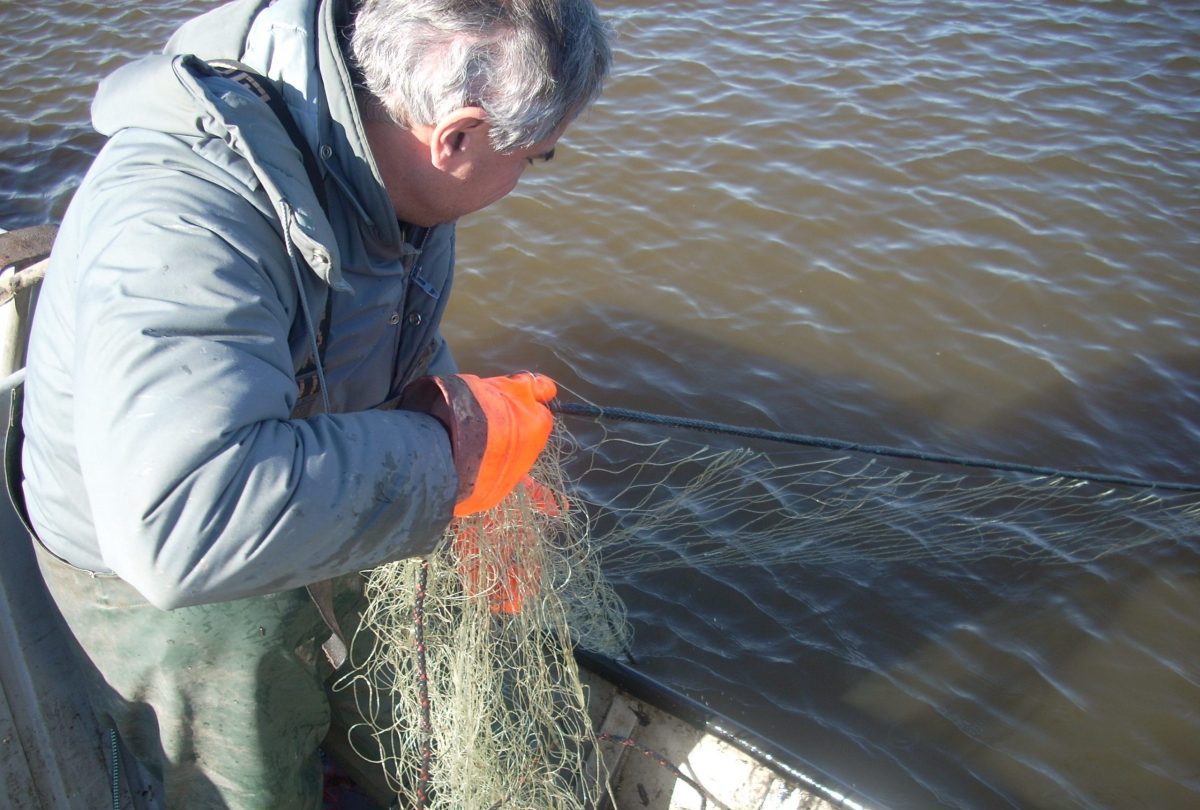When settlers first made their way to America’s eastern shore, lobster was so bountiful it would wash onto beaches, providing an easy source of sustenance. The problem? No one liked the taste — so much so that the “poor man’s chicken,” as it was called, was largely used as fertilizer and fed to prisoners and slaves. By the late 1800s, the lobster began to shed its negative reputation, and by World War II, it was considered a delicacy.
Similar stories can be told of Orange Roughy, once known as Slime Head, and Chilean Sea Bass, previously referred to as Patagonian Toothfish — and, if Mark Morgan has anything to say about it, the same will one day be said about Asian carp.
An associate professor at the University of Missouri-Columbia’s School of Natural Resources, Morgan has been working with this invasive species for more than a decade, since he first became aware of just how large of a problem it poses. The most prevalent species of carp in the Midwest, silver carp were introduced to the U.S. from Asia in the 1970s for the water purification benefits they provide, specifically to help keep catfish breeding ponds clean. But, with the help of floods, the carp made their way into other waterways, including the Mississippi River. Since then, Morgan says, the population has exploded.
“The flood of ’93 really started to open the door for carp to move into other locations. Now we have carp up and down the Mississippi River, including its major tributaries,” he says. “The river that’s most affected is the Illinois River, which runs from Chicago to St. Louis. That waterway has the most Asian carp of any place on the planet, including China — and that is where the fish came from.”
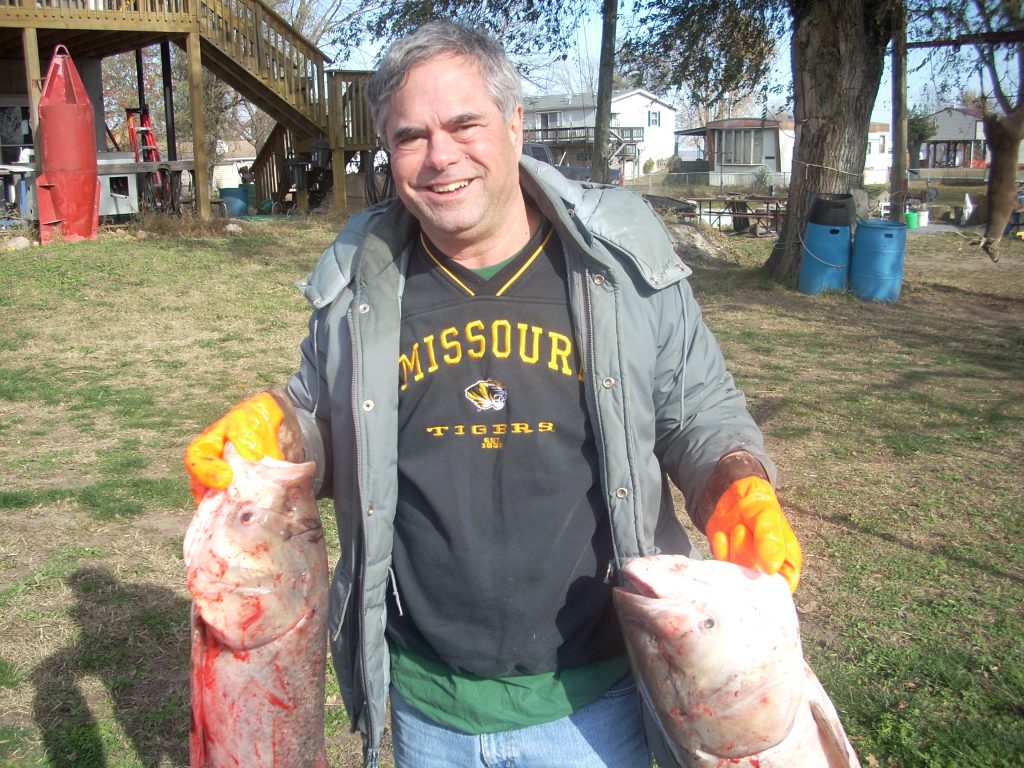
Based on a 2008 study by the Wisconsin Department of Natural Resources, more than 320,000 silver carp were thriving near the La Grange Reach of the Illinois River at that time. Today and elsewhere, who knows. “The fish are going into more new and different areas than they’ve ever gone before, and literally, it’s an environmental time bomb,” says Morgan. “The crisis with the carp is so large, and there are so many fish, especially in the Midwest, that it’s an uncountable number.”
One of the reasons for this is the rate at which carp reproduce. Silver carp, specifically, spawn from early spring through fall — and often more than once during that period. Each female can lay more than half a million eggs at one time, according to the U.S. Fish and Wildlife Service. Because of this, silver carp populations grow and spread quickly, often outcompeting native species for food.
Add to this their acrobatic nature and size — silver carp typically grow to 3 feet long and can weigh anywhere from 20 to 80 pounds — and these fish pose a danger to not only the fishing industry, but humans as well.
“They’ve actually been changed from an invasive to an injurious species,” says Roy Sorce, owner and president of Illinois-based fishing co-op Sorce Freshwater. “Part of it is because they’re harming the environment; part of it’s because they hurt people. You get hit in the head by a 60-pound fish, it could actually kill you.”
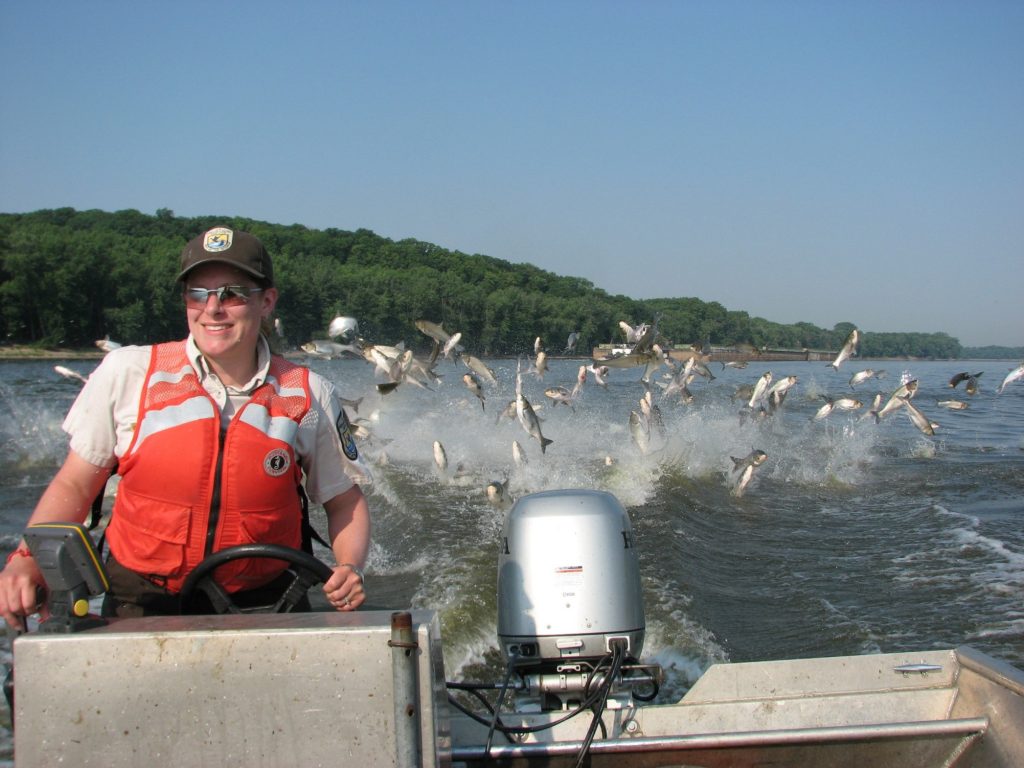
But little has been done to reduce the carp population and truly address this looming environmental issue. That is, until recently.
For the last several years, Morgan has been studying ways to reduce carp in Midwestern waterways through human consumption. “Here we have this incredibly rich source of nutrition that’s being underutilized in the United States and, in some cases, even wasted,” he says. “I thought gosh, ‘Why can’t we eat the fish?’ But as soon as you mention carp to the average person, they think, ‘Oh, yuck, that’s nasty, trash fish.’”
In his travels around the world, especially in Asian countries such as China and Vietnam, Morgan saw a much different picture. “I realized that carp are a delicacy in these countries. People love them. They worship and adore them. Poetry and artwork and sculpture are all about carp. It was mind blowing,” he says. “Then I realized, maybe they’ve got it right, and maybe we’ve got it wrong.”
But changing public perception can be a daunting task — despite the many proven nutritional benefits of eating carp.
“What you’re doing is eating an invasive species, which is good for the environment, but it’s also very nutritious. The other thing is that it tastes absolutely incredible.”
A heart-healthy fish, carp are a rich source of nutrients, including essential amino acids, omega-3 and omega-6 fatty acids and eicosapentaenoic acid (EPA), which play a role in disease prevention. Plus, Morgan notes, they are extremely low in heavy metal content and, he claims, are one of the healthiest fish in the world; this is because they are mid-stream feeders that only eat microscopic plants in the water column.
“What you’re doing is eating an invasive species, which is good for the environment, but it’s also very nutritious. The other thing is that it tastes absolutely incredible,” says Morgan. “So, I’ve really got two important things working on my side — taste as well as nutrition.”
A mild white fish, carp is relatively bland if unseasoned, he says — similar to other meats, such as ground turkey. This quality, however, also makes carp extremely versatile. By adding a range of spices and seasonings, it has many food applications. “You can put it in tacos and burritos and sausage,” says Morgan. “I put it in omelets and chili. We’ve used it in many Chinese and Mexican food applications as well.”
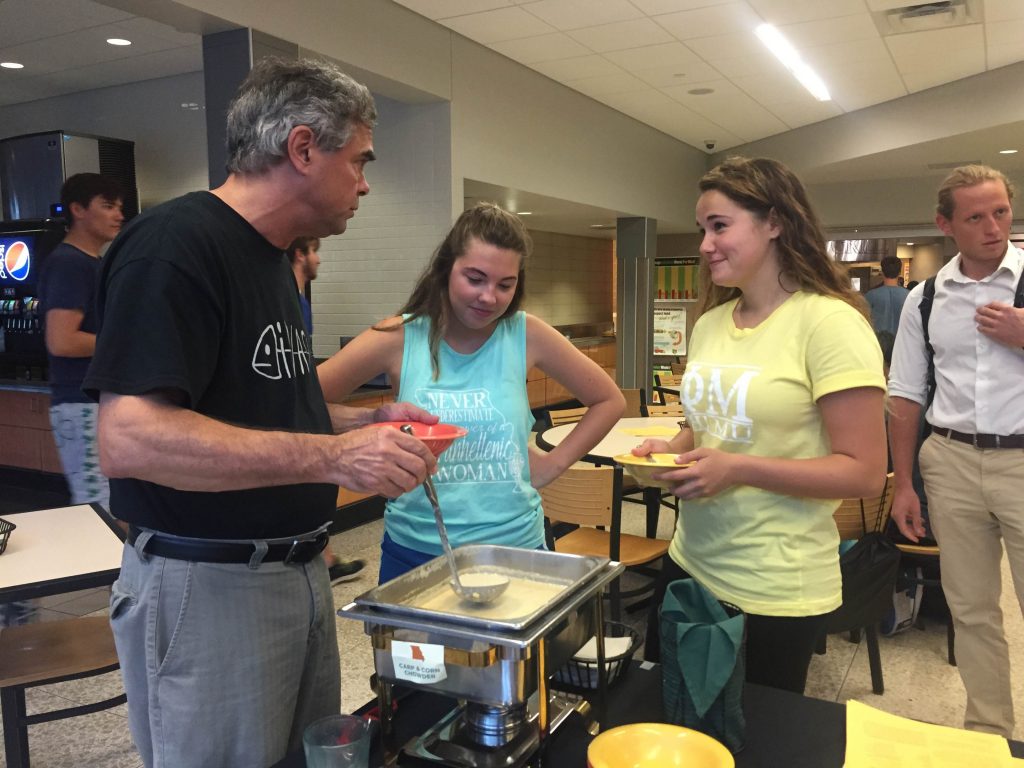
So, in 2015, Morgan launched Eat MO Carp, an initiative designed to increase awareness and consumption of silver carp by introducing them into grocery stores and restaurants around Columbia, Mo. He led taste tests and hosted feeding events across Missouri — and the results were promising. Carp beat catfish in a blind taste test, and most people were pleasantly surprised by its taste and versatility. Others were skeptical about eating a fish that has been shunned by the culinary scene.
Morgan has no problem calling these people out — asking them how many hot dogs they’ve eaten in their life, for example — but because of this hesitancy, he decided to pursue an easier route to consumption, focusing instead on developing countries.
“The carp issue is so large, so daunting, that we can’t get a handle on it,” Morgan says. “I would also say the same thing about malnutrition on a global level.”
In 2018, he began processing silver carp for consumption in Haiti, where half of the women of reproductive age suffer from anemia and a large number of children suffer from either stunting or wasting — both indicators of chronic nutritional deficiency. In this Caribbean nation, where malnutrition is rampant, taste is secondary.
“They’re interested in getting their belly full. It’s not about trash fish,” Morgan says. “The food value is first and foremost with them, but for me, it’s really the nutritional value that’s the most important thing.”
With help from his friend Clint Carter, who is a commercial fisher, Morgan would salt and smoke the carp and ship it to Haiti to serve as a viable source of animal protein. “It worked really well, but I realized it was not scalable because I had to keep the carp frozen, and then I had to thaw it quickly,” he says. “It took a small army of people to salt, smoke and vacuum-pack it in a short period of time.”
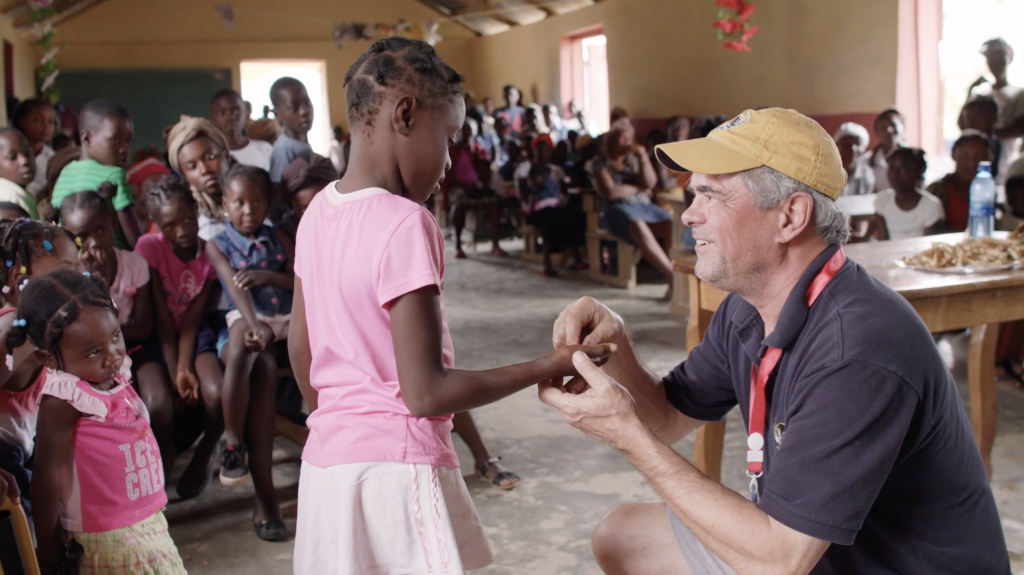
He saw the need for a different approach and came up with the revolutionary idea to powder the carp. At the recommendation of Carter, Morgan connected with Roy Sorce of Sorce Freshwater to discuss a partnership.
Located on the Illinois River in East Peoria, Ill., Sorce Freshwater is also committed to reducing the carp population. To have any sort of impact, fishers in the Midwest Fish Co-Op typically harvest between 100,000 to 150,000 pounds of silver carp each week, which they sell to processors in Illinois and beyond.
“We can harvest 15 million pounds a year out of this area and not make a dent in the population. So we have to harvest more than that to see any kind of a reduced number,” says Sorce. “Part of the reason is, the Peoria pool, which is just outside our back door, is a national breeding ground. It has ideal water temperatures, ideal water depth and the ideal current for these fish to spawn.”
Morgan and Sorce quickly realized they shared an interest in reducing the carp population and feeding those in need. “We felt we had some common goals as to what we wanted to see happen with the Asian carp program in the state of Illinois and in the whole Midwest area,” says Sorce. The men began working together toward a common cause. Sorce provided the fish, and Morgan made the powder.
Although every part of the carp — from the flesh, to the head, to the guts, to the bones, to the scales — can be powdered, Morgan mainly focuses on the flesh. Nutritional analyses of the powder have revealed a large protein concentration, omega-3 fatty acids, calcium, iron, potassium and all nine essential amino acids. Low in moisture, it has a long shelf-life, and most importantly, it doesn’t require freezing or refrigeration.
Morgan sees tremendous opportunity for the application of powdered carp in developing countries in particular.
“Carp have been prevented from entering Lake Michigan because of electrification, but the army is amassing the troops. Now our focus should be on reduction, not simply prevention.”
“In Nigeria, they have a porridge called Tom Brown. It’s a mixture of powders, consisting of yellow corn, millet, sorghum, soybean and ground nuts (peanuts). When I was over there last, I said, ‘What do you think about replacing the peanuts with carp?’” Morgan says. “They were using peanuts as the source of protein, but carp has far greater protein value than peanuts. I can add a tremendous protein boost to this porridge by simply adding silver carp powder to it.”
By combining silver carp powder with the other powders, adding some water and cooking it for 10 minutes, the mixture results in a porridge that, Morgan says, is ideally suited for infants and mothers alike. “The mom and baby can eat the porridge, and it’s totally nutrition-packed because it has corn, millet, sorghum, soybean and carp.”
Morgan believes the possibilities and applications for powdered carp are endless (protein smoothie, anyone?), and lately, he’s been experimenting with pasta fortification and even desserts. “In my home kitchen, I took some rice flour, mixed it with my carp powder — not equal proportions — and then I put a small amount of water in it in order to make a dough ball,” he says. “I inserted some chocolate chips in the middle and sealed it up. I put it in boiling water for a couple of minutes, and when it floated, I took it out and rolled it in coconut flakes — and presto, you have a carp dessert! The taste is incredible — and it’s healthy.”
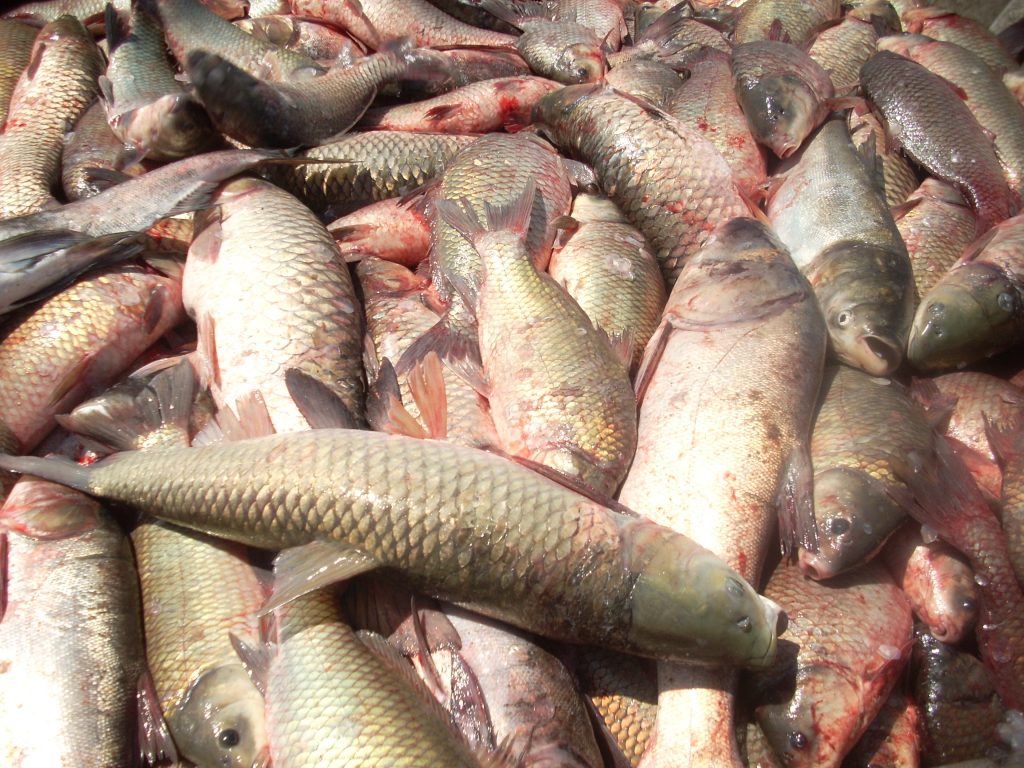
Despite being in the early stages, Morgan’s powder project has already attracted much attention, with many people and organizations reaching out who are either interested in the product itself or in getting involved. Morgan has received a few grants to advance the project — one specifically from the Institute of Food Technologists to develop the Tom Brown porridge — but without additional support, Morgan says he lacks the means to move forward in any meaningful way. Soon, he plans to shift his efforts away from research to fundraising.
“We don’t have scale-up capabilities at this point in time,” says Morgan. “In order to do that, I would need to get a powder machine, which I don’t have right now.”
He’s accepting tax deductible donations through the University of Missouri’s crowdfunding website here. Thus far, Morgan has raised just over $2,500 toward his $25,000 goal.
As Morgan toils to raise funds, however, another battle wages in the Mississippi River as carp continue to expand, deepening fears that they could soon make their way into the Great Lakes. Should this happen, it would have repercussions for the $6 billion commercial and recreational fishing industry, not to mention an impact on native fish.
“Carp have been prevented from entering Lake Michigan because of electrification, but the army is amassing the troops,” Morgan says. “Now our focus should be on reduction, not simply prevention.”
With efforts underway to rebrand silver carp as “copi” — an effort launched by the Illinois Department of Natural Resources in the summer of 2022 — and more restaurants starting to serve it, Morgan is hopeful that we can begin to make a dent in this issue on several fronts. His retirement pending, he plans to dedicate even more of his time to addressing the dual problem of carp and malnutrition.
“To create a legacy like this is important and meaningful to me because I get to help people who I’ve never met and never will meet,” Morgan says, “and that’s the coolest of the cool.”

